David Silberman pointed out the ‘Leaping Lena’ article from the October 1941 issue of Popular Science (I thought I’d purchased this issue to scan, but apparently I didn’t do that). It’s an interesting review of the prototype jeeps. You also can view the entire issue on Google.
13 Comments on “Leaping Lena Article from Popular Science”
Leave a Reply

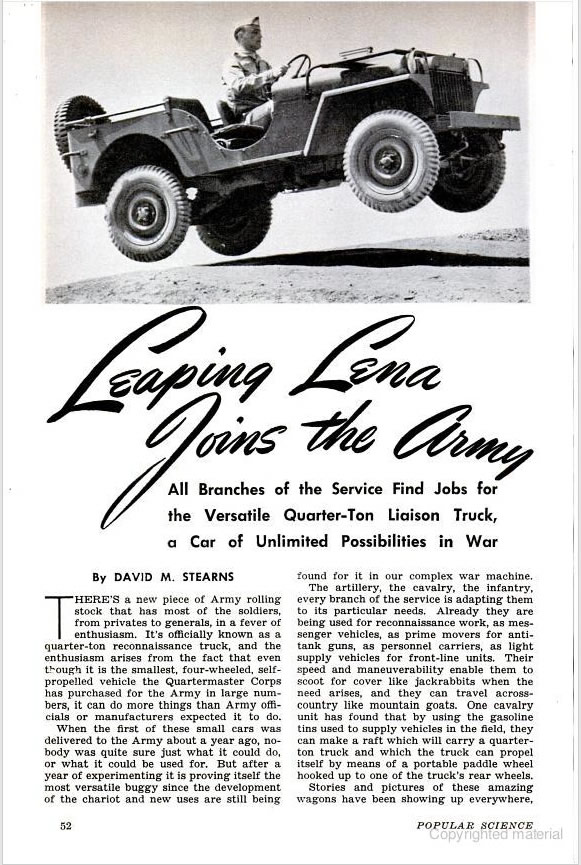
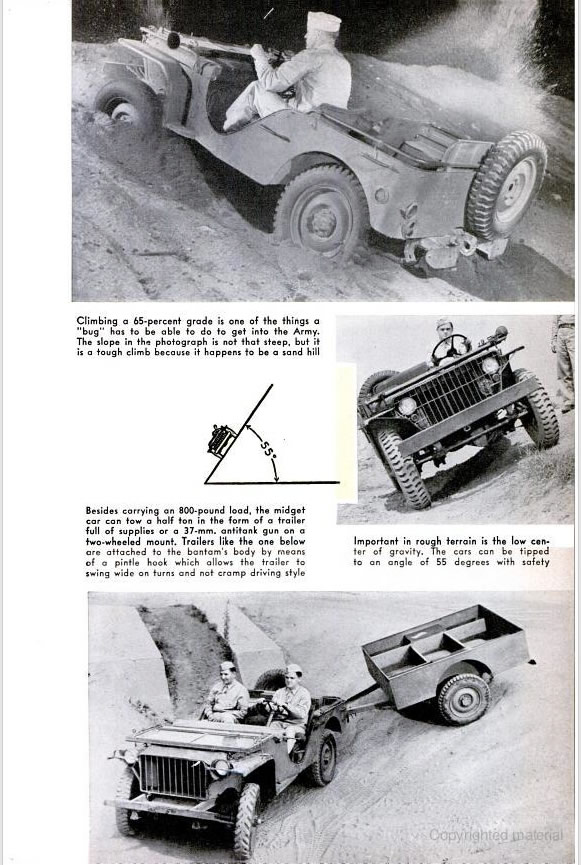
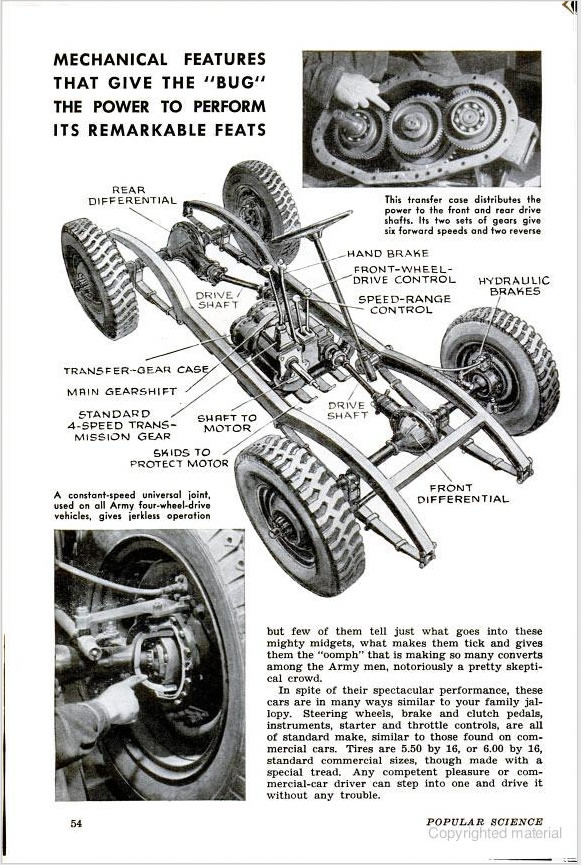
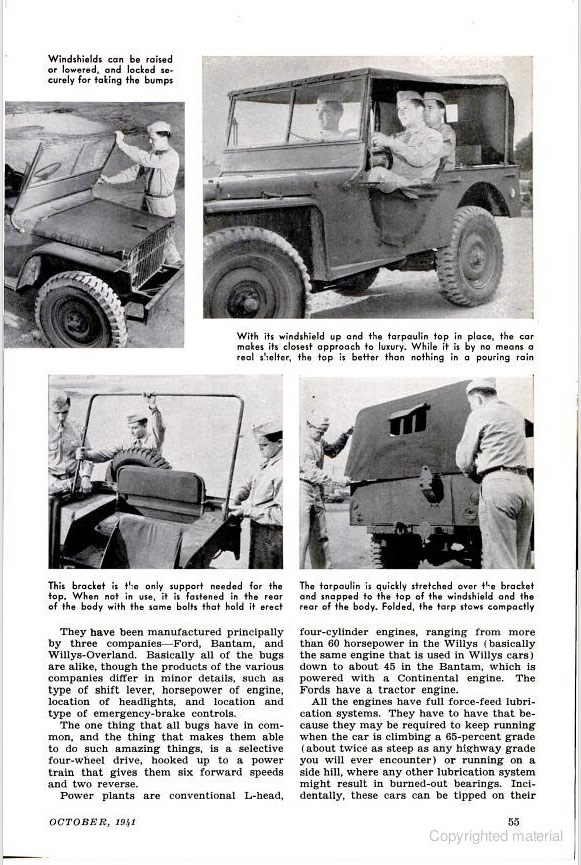
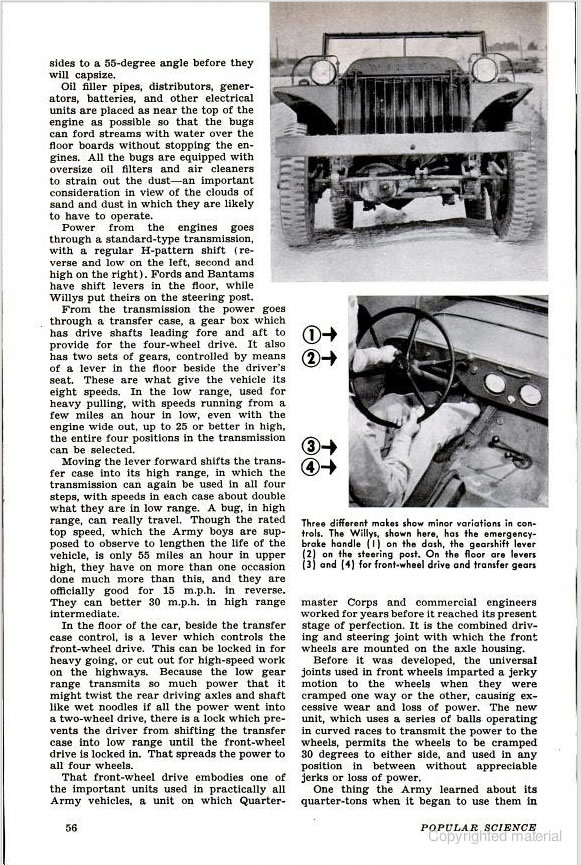
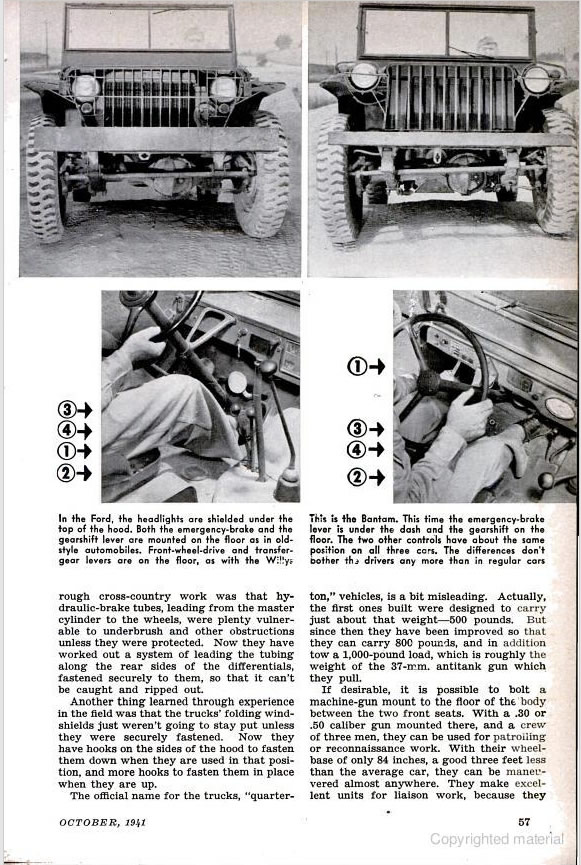
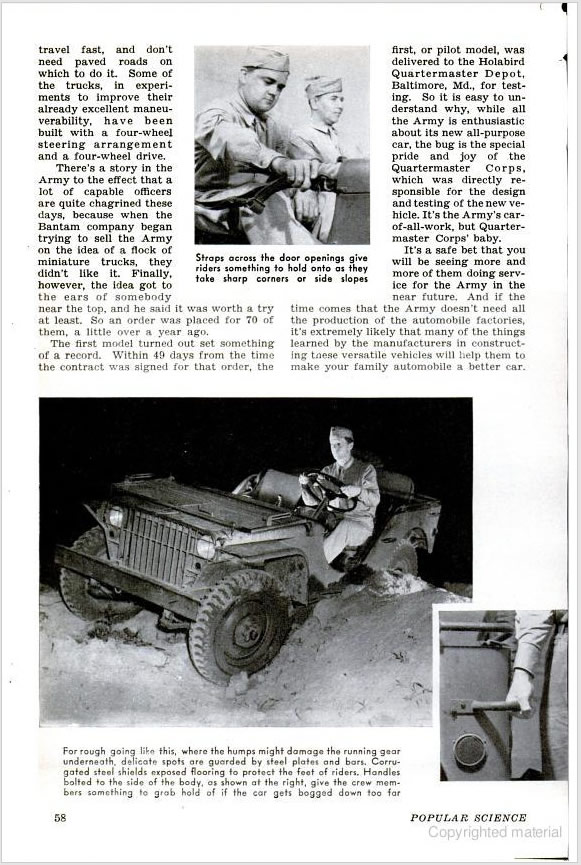
Thanks for posting this article, Dave. Great reading!
Until now I wasn’t aware that Willys’ first army jeeps had a column shift, just like their very first CJ’s. It seems like they were trying hard to push that feature (verses the floor shift). Is there any record of why they thought the column shift was better, or would be preferred?
It’s a good question. I don’t know offhand, but will try to do some research when I get a chance.
– Dave
Hi all,
It was a carryover from the Americar, they just used what they had.
Have a good weekend, Leo
I would say also that the column shifter was relatively new in 1941, it was the new in thing to have, more modern if you will. I suppose that Willys thought they were ahead of the rest
with a column shift. I have a 49 Chevy with a column shifter and nobody knows how to use it anymore, great theft deterrent.
That xfer case is a model I’ve never obscene B4. Any ol timers know who’s design it is? (Ford/Bantam)
& the Willys drop is today’s standard, but Ford & Bantam used driver drop punkins. Wasn’t aware they had seminal differences. What year was the honeymoon over, when they put em all in the same line?
Looking at the Ford Transfer case, it looks pretty heavy duty. Would it be the same as used in heavier trucks such as the gtbc here with the transfer case controls are almost under the steering wheel?
http://www.usautoindustryworldwartwo.com/ford.htm
Regarding the column shift, it did appear to come into fashion in the late 30’s. More seat room and your date could sit a little closer?
“Advantages of a column shifter are the ability to switch between the two most commonly used gears—second and third—without letting go of the steering wheel, and the lack of interference with passenger seating space in vehicles equipped with a bench seat. ”
https://en.wikipedia.org/wiki/Manual_transmission
The transfercase drop on the passenger side was standardized by the Fall of 1941. That’s when the jeep design was finalized on the Willys platform.
The transfercase design was completed by the Spicer Corp for the original Bantam. The only Bantam driver’s side drop transfercase I’ve seen looked looked like a mirror to the passenger side drop. It didn’t quite look like the one shown above. But, I only got a quick look at it.
From what little I could find if you were looking for a transfer case at that time one might look to https://en.wikipedia.org/wiki/Marmon-Herrington
Ford did use them before so might have used in the early ford and bantem models?
The picture in the diagram is not a spicer, is it?
The Dana 18 is the only cast iron, offset drive (meaning that both front and rear driveshafts are in-line) transfer case found in production Jeeps.
The earliest Dana 18’s in the Bantam and first GPW’s were driver’s drop. For the purpose of standardization across the GPW & MB line for parts interchageability, they were changed to passenger drop. These and all subsequent 18’s had a passenger side rear output that is often coupled with a drum brake assembly. The front output is also on the passenger side.
http://www.novak-adapt.com/knowledge/transfer-cases/model-18/
Novak history confirms you observation.
I would propose this: what we are seeing in the picture and illustration are a marmon herrington transfer case. The spicer being a new one and because of military use, information would be limited for public consumption?
Note the illustration has “standard 4 speed transmission”. That was the ford 9n tractor transmission? Again ford used marmon herrington transfer cases in prior military build, so most likely would use it for their first jeep.
from the following: http://fordmotorhistory.com/factories/richmond/jeep_developed.php
1) Bantam worked closely with the Spicer Manufacturing Company of Toledo, Ohio, to develop stout four-wheel drive axles and transfer case for the light-weight truck, and Bantam opted for an engine made by Continental Motors that was larger than its own Bantam engine.
I guess I always wondered about the design of the transfer case and axles, they developed together with bantem. If they followed common thinking and spicer modeled after the herrington transfer case, most would been thinking a smaller herrington tc in their redesign. Willys thought out of the box and changed to passenger drop as a mod to the first spicer tc?
2) In October 1940, the Quartermaster Corps invited bids and negotiated contracts with American Bantam, Willys-Overland, and Ford for 500 of the vehicles each, specifying that all 1,500 axles and transfer cases would be supplied by Spicer.
So the first standardization was spicer transfercase and axles which were final designed by 1940? Standardization of engines came in a later bid?
1. I had wondered about what the transfercase might have been modeled after, but I haven’t found any evidence to lead me in one direction or another. As far as I can tell, it was a wholly new invention. The thing that seemed to define the jeep and truly make it different was that it was a road capable vehicle with PART-TIME 4WD.
2. As far as I know, the Bantams and GPs all had the driver side drop. So, it wasn’t until the Fall of 1941 that the transfercase was truly standardized (that’s my understanding, but I haven’t fully researched this issue).
Obviously Jeep science is still popular in Iowa! Steve’s train of thought seems to be on the right track. M-H pioneered HD 4×4. & I agree that the Burma Jeep seems to have the same model xfer case that’s in the Popular Science article. Spicer must’ve had a better, browner-nosed, lobbyist in DC than Marmon- H.